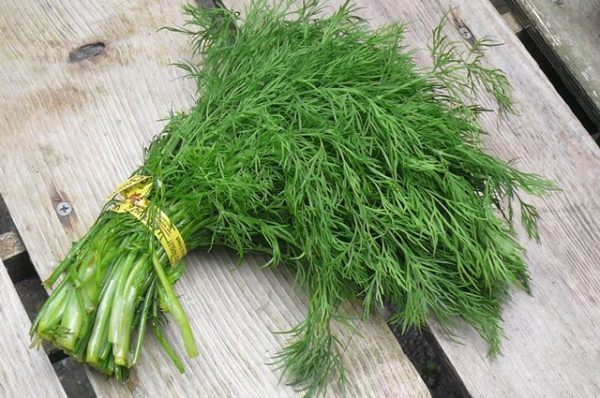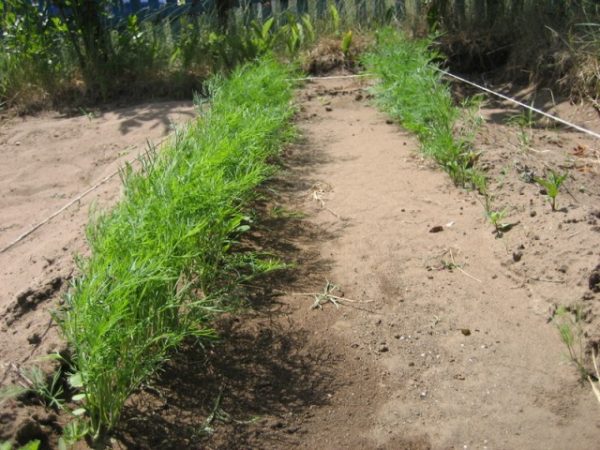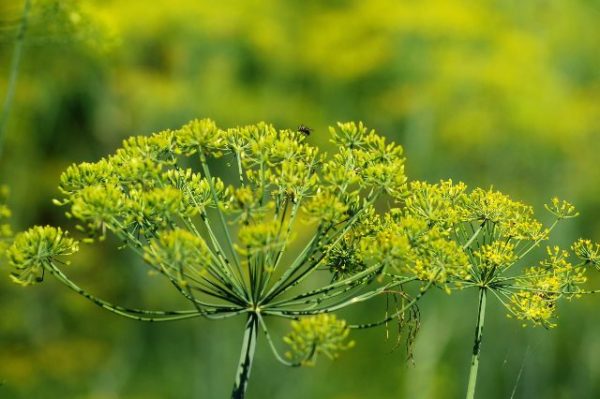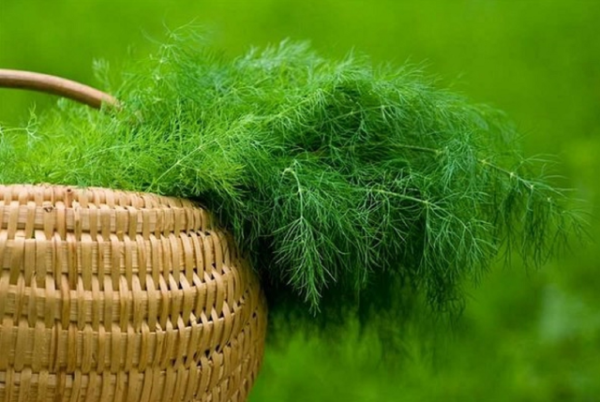Dill is a very unpretentious crop that can be quickly grown everywhere in the open field. The scope of its application is very wide. The plant can be used both in cooking and in medicine. But even for such non-capricious greens there are certain rules of planting, allowing you to enjoy the aromatic seasoning for a long time. Further in the article we will talk about how to plant, water and sprout dill.
Table of contents
Terms of planting dill in the open ground in spring and autumn
Dill is able to withstand light frost, because it can be planted as early as April. But how much time in this case to wait for the first shoots? The first shoots begin to appear when the air temperature reaches + 3 ° C. Low temperatures inhibit the plant and contribute to slower growth. It is best to wait until the air warms up.

For early harvest, seed sowing is done at the very beginning of April, when snow is just coming off. To be able to eat greens as long as possible, do not sow the whole bed at once. Seed planted with an interval of a couple of weeks.
According to the lunar calendar, the best days to land in 2018 will be:
| March | 8-11, 20-24 |
| April | 7-11, 22-23, 25-26 |
| May | 8-11, 20-25 |
| June | 5-9, 19-25 |
What kind of soil does dill like?
Greens grow remarkably on fertile soils rich in organic fertilizers. Before planting a plant, it is recommended to add a small amount of humus or fertilize the soil with a solution of mullein, bird droppings. From chemical fertilizers it is good to add the following:
- saltpeter;
- superphosphate;
- potassium group.

Where better to grow greens? She likes sunny beds with lots of sunshine. However, a direct hit of the rays on it is undesirable, since the appetizing greens can spoil their appearance with burns.. It is also advisable to avoid drafts. But the plant is not demanding in relation to its neighbors: it can live very well alongside any cultures.
Proper preparation of the beds to plant seeds
The preparation of the beds should begin in the fall.. This will provide an opportunity to start planting seeds in early spring, and accordingly - and get an early harvest. It is necessary to dig up the earth to a depth of 20 cm. At the same time, both humus and mineral fertilizers should be applied. After these procedures, it will only be necessary to level the ground thoroughly, make grooves in it and sow the seeds.
Do I need to soak dill before planting
Seeds need preliminary preparation only if it is planned to sow them not before winter. Preparatory activities should begin one week before the intended sowing. The first step is to put the seeds in gauze and moisten well. Gauze should not dry out, it should be constantly moistened. Thus, seeds are kept for about a week.

Immediately before sowing you need to dry the seeds for half an hour. After that you can sow them on the garden bed. After a couple of weeks, shoots should appear.
If sowing is done before winter, then it is not necessary to soak the seeds. In the spring they will have enough moisture in the soil and they will sprout perfectly.
Schemes of quick sowing and good germination
Before sowing seeds need to prepare the grooves a couple of centimeters deep. The distance between them is left at 20 centimeters. Between seeds, the spacing is recommended to be equal to 5 centimeters.
You can use greens as a compacting crop and plant it among other vegetables in the garden beds.In this case, it is necessary to provide sufficient distance for the development of both the dill itself and its neighboring crops.

Some summer residents use a zigzag method of sowing this plant on the beds and claim that it is much more convenient to care for it in this way. It is worth noting that this is a purely personal matter, each of which draws conclusions based only on personal experience and preferences.
Care does not cause much trouble. However, even this unpretentious culture has its pests. The main one is aphid. To combat it, it is good to use alcohol, with a solution of which the bed is sprayed. For 10 liters, you will need 2 tablespoons of crude ethyl alcohol. In addition, the pest does not tolerate growth near thyme bushes. It’s possible to plant it nearby and not to worry that the greens rich in vitamins will amaze aphids.
After all, this fact testifies, first of all, to the lack of any trace element in the soil.Yellowing can be eliminated by making saltpetre at the root, and red leaves are eliminated by the introduction of phosphate fertilizers.
Dill is the most common and unpretentious spice grown everywhere. Harvest can be collected almost all year round (as it grows). However, the leaves have the greatest flavor precisely at the time when the inflorescences begin to form.

Now there are many varieties of dill on the market, which differ not only in appearance and taste, but also in agricultural technology: some varieties are easier to grow, some need to soak before planting, some will sprout for a long time.These crops have different ripening terms.that makes it possible to plan in advance the timing of the harvest and adjust them to fit your needs.
It is not necessary to take a separate garden for dill: there is the possibility of growing it with other crops (for example, potatoes, tomatoes, carrots). This is very important for owners of small summer cottages who want to use their territory with maximum benefit.
